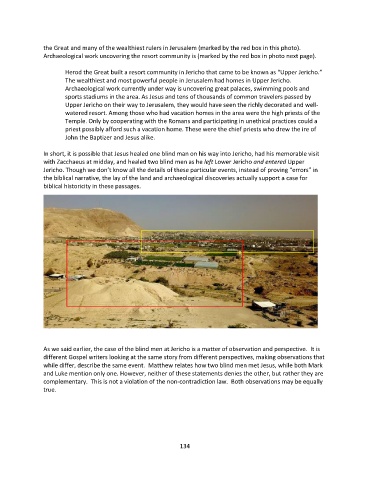Page 136 - Doctrine and History of the Preservation of the Bible revised
P. 136
the Great and many of the wealthiest rulers in Jerusalem (marked by the red box in this photo).
Archaeological work uncovering the resort community is (marked by the red box in photo next page).
Herod the Great built a resort community in Jericho that came to be known as “Upper Jericho.”
The wealthiest and most powerful people in Jerusalem had homes in Upper Jericho.
Archaeological work currently under way is uncovering great palaces, swimming pools and
sports stadiums in the area. As Jesus and tens of thousands of common travelers passed by
Upper Jericho on their way to Jerusalem, they would have seen the richly decorated and well-
watered resort. Among those who had vacation homes in the area were the high priests of the
Temple. Only by cooperating with the Romans and participating in unethical practices could a
priest possibly afford such a vacation home. These were the chief priests who drew the ire of
John the Baptizer and Jesus alike.
In short, it is possible that Jesus healed one blind man on his way into Jericho, had his memorable visit
with Zacchaeus at midday, and healed two blind men as he left Lower Jericho and entered Upper
Jericho. Though we don’t know all the details of these particular events, instead of proving “errors” in
the biblical narrative, the lay of the land and archaeological discoveries actually support a case for
biblical historicity in these passages.
As we said earlier, the case of the blind men at Jericho is a matter of observation and perspective. It is
different Gospel writers looking at the same story from different perspectives, making observations that
while differ, describe the same event. Matthew relates how two blind men met Jesus, while both Mark
and Luke mention only one. However, neither of these statements denies the other, but rather they are
complementary. This is not a violation of the non-contradiction law. Both observations may be equally
true.
134

